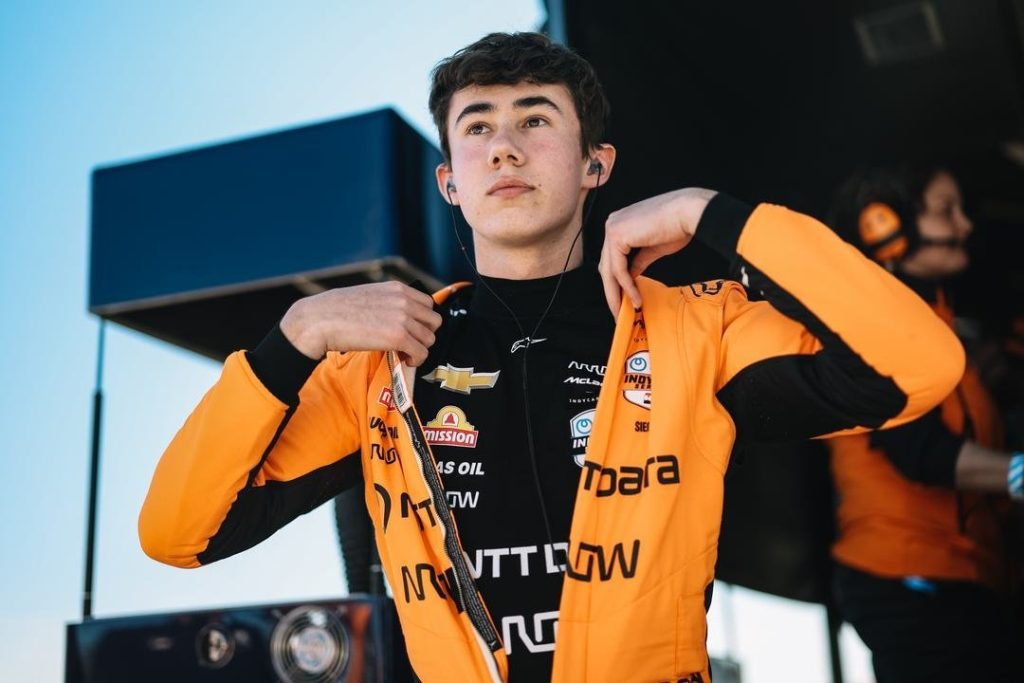Pato O’Ward topped the timesheets during day one of IndyCar’s final pre-season test at Sebring International Raceway, where teams focused on evaluating an enhanced hybrid system deployment strategy ahead of the 2025 season opener
The 2025 NTT IndyCar Series commenced its final pre-season preparations at Sebring International Raceway, with teams and drivers focusing on crucial hybrid system evaluations ahead of the season opener. Arrow McLaren’s Pato O’Ward set the pace on day one, demonstrating impressive speed on the notoriously challenging circuit.
Testing format
The two-day test, featuring all 11 teams and 27 drivers, utilises Sebring’s short course—a venue renowned for its role in developing CART, Champ Car, and IndyCar machines. The track’s bumpy and technical nature provides an ideal simulation of street course conditions, making it particularly valuable for teams preparing for the upcoming St. Petersburg season opener.
The field split into two groups to maximise efficiency, ensuring each driver receives comprehensive running time in both cooler and warmer conditions. This strategic approach allows teams to gather vital data across varying track temperatures, crucial for understanding the performance envelope of their machines.
The highlights of day one
O’Ward demonstrated exceptional pace, setting the day’s fastest lap at 52.3470 seconds (114.849 MPH) during the morning session. The Mexican driver completed 47 laps, expressing enthusiasm about his return to the cockpit. “Oh, man, it’s the best feeling in the world; it’s the best job in the world,” O’Ward remarked. “I was so excited to come back to Sebring and get into an IndyCar Series car, getting to work with the engineers again.”

Meyer Shank Racing’s Marcus Armstrong impressed with the second-fastest time, just 0.0205 seconds behind O’Ward, while reigning champion Alex Palou secured the third spot. Conor Daly, piloting the #78 Juncos Hollinger Racing entry, and Christian Lundgaard rounded out the top five.
Hybrid system
A primary focus of the test centres on evaluating new deployment strategies for the series’ hybrid system. In 2024, IndyCar maintained approximately 30% of battery capacity for self-starting capabilities, limiting drivers to 70% of the available charge for performance enhancement. At Sebring, the series is testing a more aggressive approach, potentially allowing drivers access to a larger portion of the battery’s charge for deployment.
This experimental strategy, if proven reliable and safe, could be implemented as early as the St. Petersburg opener, potentially adding a new dynamic to the racing spectacle.
A day with minor incidents
The day ran relatively smoothly, with teams successfully testing various setups and several drivers evaluating the new Cosworth mark 3 steering wheel. However, Nolan Siegel crashed his #6 Arrow McLaren Chevrolet into the barriers, damaging the right side of his car and forcing him to end his day after just 34 laps. Veteran Scott Dixon also faced challenges, with mechanical issues limiting his #9 Chip Ganassi Racing Honda to just a few installation laps.

The field completed a total of 1,311 laps, with Ed Carpenter Racing’s Christian Rasmussen leading the lap count at 71 circuits. All teams are set to return for the final day of testing, with the next on-track action scheduled for the season opener in St. Petersburg in ten days’ time.
This crucial test session represents the final opportunity for teams to fine-tune their setups and understand the nuances before the 2025 campaign begins in earnest. With increased battery deployment potentially on the horizon, the upcoming season promises to deliver enhanced performance and more strategic options for teams and drivers alike.



